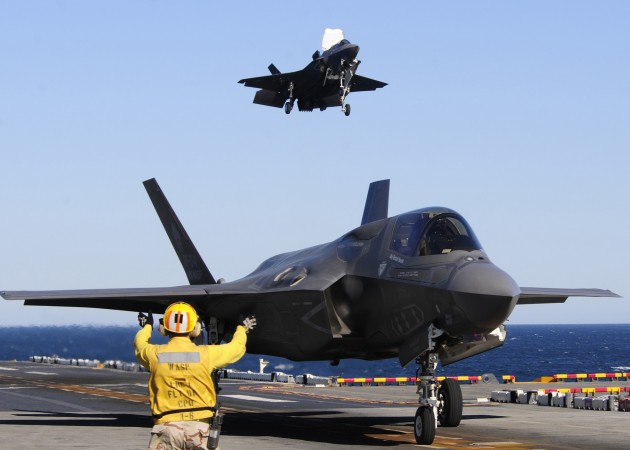Air Force Lt. Gen. Christopher Bogdan, head of the F-35 program, shut up a room full of reporters yesterday. That’s right. None of us said a word for about 15 minutes yesterday while Bogdan told us he wanted to see us get our facts right about the F-35 program. But what really got our attention was his lead: “I am not a salesman for the F-35. I am not an advocate for the F-35 prgram, per se. My job is to run the best program I can.”
The uniformed officers who run weapons programs are often cast as advocates for their programs. After all, they have to fight for money each time the defense budget is built. And their careers depend on how well their program performs while they are running it. Everyone who covers the F-35 remembers when Robert Gates very publicly and unceremoniously announced that he had fired Bogdan’s predecessor, Marine Maj. Gen. David Heinz, during the 2010 annual budget briefing. Heinz was probably fired for his support of the second engine for the F-35 — Gates didn’t appreciate people who disagreed with his views in public — but fired he was.
“I work for the warfighter and i work for the taxpayers. I don’t work for anyone else,” he told us. Bogdan is riding the tiger of the biggest conventional weapons program in American history. For him to state baldly that he isn’t an advocate for the program — he even told us he would happily wind up the program if told to do so — is pretty bold. This is, of course, the same guy whose first public statement about the F-35 program he had just taken over was that the relationship between the JPO and Lockheed Martin was “the worst I’ve ever seen.” So there is precedent for Bogdan speaking his mind.
As a taxpayer let me say I was pretty pleased to hear Bogdan. But we do have to take his declaration with a dash of salt. After all, you don’t run an international business the size and complexity of the F-35 without having some acting skills and the gift of the gab.
So, you are doubtless wondering, what else did Bogdan have to say about the program he oversees.
First off, the 2B software won’t be ready by June, when the Marines plan to declare Initial Operational Capability (IOC). They need to “tweak” it, Bogdan said, so the final version of the software won’t be ready until early fall. But it isn’t ready, so he’s late. That’s not a huge deal, except for the dark optics.
Almost since officials started talking about the F-35’s capabilities, they have touted its fusion engine as perhaps the plane’s most remarkable tool. This bit of mathematical formula (algorthymns and software) takes data from the plane’s sensors, looks at the threat library and tells the pilot what he faces and recommends the right tools to destroy it. It’s the fusion engine that needs fixing.
The F-35 is designed to fly in groups of four and they are all supposed to share their data with each other. The military doesn’t like to talk about it, but the planes do not fly in a tight formation. It’s more like a diamond spread out over dozens or hundreds of miles. During December testing, the program found there were problems with the fusion engine’s results. When one F-35 is using its sensors to look at ground targets the fusion engine works extremely well. When two planes are sharing data, all goes well. When three planes share, things are pretty good. When four planes share, the system can report ghost targets and other anomalies that Bogdan did not offer details about.
Regardless of those problems, he said the Marines plan to go ahead and — barring other problems — declare IOC in 99 days. Bogdan spoke Tuesday. Plane maker Lockheed Martin won’t be happy as they will lose a portion of a $300 million incentive fee designed to spur the company to build the three software versions leading to Full Operational Capability — 2B, 3I and 3F — on time. Software has long been the greatest challenge faced by the program.
The Marines will use what Bogdan called workarounds — two pairs of planes sharing data instead of all four sharing with each other, for example — until Lockheed comes up with fixes.
Bogdan also noted that the plane’s operations and maintenance system known as ALIS is on his “big list” of serious challenges faced by the program.
For those who care, here are the latest cost figures per plane in LRIPs six, seven and eight:
- F-35A $117 million; $112 million; $108 million
- F-35B $145 million; $137 million; $134 million
- F-35C $134 million; $130 million; $129 million
Northrop sees F-16 IVEWS, IBCS as ‘multibillion dollar’ international sales drivers
In addition, CEO Kathy Warden says the company sees a chance to sell up to five Triton UAVs to the NATO alliance.




























